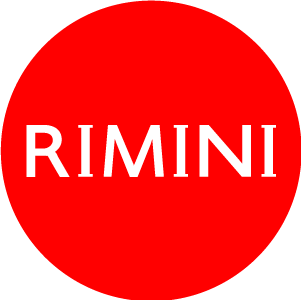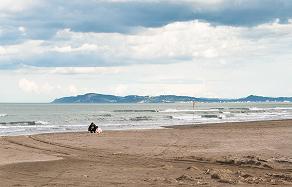
Rimini in wintertime
Once again two exhibitions of very high quality with art masterpieces known all over the world choose Rimini as their venue. After the great exhibition "From Rembrandt to Gauguin and Picasso. The enchant of painting in Rimini" which closed in Spring 2010, people will have the chance of visiting two new great exhibitions from 23rd October 2010 to 27th March 2011: “Paris. The wonderful years - Impressionism versus the Salon ” and “Caravaggio and other Seventeenth-Century Painters - Masterpieces from the Wadsworth Atheneum Museum of Art in Hartford, USA ”. In addition to these exhibitions, it is possible to admire several unknown works by the painter Gianquinto (Venice 1929-2003), an elegant solitary artist with a great skill in the use of colours and brushstrokes.
The Rimini offer includes other two shows dedicated to Nunziante (from 11 December 2010 to 30th January 2011) and to Ciarrocchi (from 5th February to 27th March 2011).
A very dense programme with more than 110 works which bring Rimini to the fore of the national artistic scenary.
An excellent opportunity to spend an unexpected week-end in Rimini among art treasures in its beautiful and rich historic centre and its fascinating seaside at winter time.
Winter is the ideal season to discover this unusual part of Rimini, choosing among artistic itineraries in search of Roman signs such as Tiberious Bridge or Augustus Arch, which are the source of inspiration for the architecture of the Renaissance with its masterpiece, the Malatesta Temple. A cultural tour also includes appetizing stops at typical restaurants where people can taste and enjoy the local dishes: you can't leave the city without tasting the real piadina from Rimini.
In Rimini you can also go shopping and find good stuff at reasonable prices. Don't forget to stop for a drink in trendy venues such as the noMi lounge bar next to the Hotel Duomo designed by the famous archistar Ron Arad (via Giordano Bruno 28, tel. 0541.52.367), a few steps from the main shopping street Corso d’Augusto.
Here are some places not to be missed while visiting Rimini historic centre.
The Surgeon’s House
An archaeological site that came to light from the darkness of the centuries in the heart of the city. The important of the archaeological discovery depends above all on the richest surgical and pharmaceutical equipment of the Roman time that archaeologists have found here.
A suggestive scenery with more than 2000 years of history in a setting designed with the most modern museum exhibition critieria, that now is already known all around the world.
The archaeological area is of 700 square meters and contains the remains of the house of the surgeon who worked in Ariminum during the third century. Here the surgeon’s equipment was unearthed and now it is kept in the nearby museum.
The excavation is now protected by an architectural work offering an interesting view to those who pass-by. Being the Domus situated next to the city museum, the visit to the site becomes an integral part of it.
City Museum
It is hosted in the eighteenth-century convent of the Jesuits (info: tel 0039 0541 21482) and it keeps the historical and cultural heritage of Rimini and its area. It is a source of wonder and curiosities: here you can even find little pieces of stone that the Romans used as entrance tickets to the Anphitheatre or little statues representing the gladiators. A rare hoard of Roman coins, magnificent mosaics, amphorae, bricks from the clay kilns run by the first entrepreneurs in Rimini.
In the art gallery there are paintings, sculptures, ceramics, tapestries and jewellery. An imponent fresco of the fourteenth century painting school of Rimini with the Last Judgement, the fine Crucifix by Giovanni da Rimini, the precious polyptych by Giuliano da Rimini, pottery vases and jars decorated with coats of arms of the Malatesta family, valuable works of the Malatesta time commissioned to famous artists such as: Giovanni Bellini, Domenico Ghirlandaio, Agostino di Duccio, Pisanello, Matteo de' Pasti, Guido Cagnacci, il Centino, il Guercino and Simone Cantarini. In the garden-courtyard there is a Roman Lapidary, which contains an epigraphic collection of about one hundred Roman inscriptions.
On the ground floor there is an area dedicated to Renè Gruau, a famous contemporary fashion designer from Rimini, deceased in March 2004.
Recently a new Arcaeological section has been open in the museum. It is dedicated to the Imperial Rimini of the 2nd and 3rd century. Here the richest surgical and pharmaceutical equipment of the Surgeon Domus is kept together with the famous mosaic of the ancient boats, once in the Domus Diotallevi.
Borgo San Giuliano
It was the ancient fishermen’s district. Today the houses here are very expensive although they are classical examples of ancient popular buildings, poor, of medieval origin, but perfectly restored with pastel coloured walls often painted with murals and with balconies full of flowers. It is a pleasure to walk around the little roads and squares in silence (it is a pedestrian area), in an atmosphere full of poetry. People say that the Borgo San Giuliano was Federico Fellini and Giulietta Masina’s favourite place in Rimini.
Worth a visit is the church dedicated to Saint Giuliano, in Palladian style. Inside the church it is possible to admire a beautiful painting by Paolo Veronese, the martyrdom of Saint Giuliano, on the main altar. Underneath the large canvas there is a marble Roman sarcophagus containing the relics of the young saint coming from Istria and tortured by the pro-consul Marciano. The tradition says that the sarcophagus ran aground on the beach in Rimini, coming from Dalmatia. Since then in that very point a miracle source has been gushing fresh water: the so-called Sacramora, the sacred house. Every two years in the month of September the "borghigiani" hold a feast known as the Festa de’ Borg to celebrate a specific theme and relive the events and characters that have marked history in this corner of Rimini and in the entire city.
MalatestaTemple
in Via IV Novembre, the Temple, masterpiece of the Italian Renaissance, tells about an intense love story: that between Sigismondo Pandolfo Malatesta and his very young lover who soon also became his third and last wife Isotta degli Atti. Sigismondo had it built (first restoring, thenn demolishing the previous Franziscan church) with the idea of creating a mausoleum for Isotta and himself. Candid, hieratic in its marble façade, following the project of the famous architect Leon Battista Alberti, the Temple contains a series of chapels and treasures: a Crucefix by Giotto, a fresco by Piero della Francesca, the precious bas-reliefs of the angels on a blue background. For the first time, following the Renaissance’s philosophy, the Temple doesn’t only celebrate God, but above all a man, in particular Sigismondo.
The Old Fish Market and the places of entertainment
Rimini nightlife takes place above all in two areas according to the season: the end of the beach promenade, between Marina Centro and the wharf, with street bars and venues directly on the beach, and the little roads of the old city centre, especially near the Old Fish Market (Vecchia Pescheria), where every evening thousands of young people meet for a drink or an appetizer, a concert or just a meeting. The charm of the Old Fish Market comes out from the mixture between history and new trends: wine cellars, pubs, restaurants, table outside, candlelight enliven the medieval squares and romantic lanes in the historic centre, thus transforming it into the Montmartre of Rimini.
Fellini tour
Rimini is also tied with the great cinema, since it is representative of Federico Fellini’ world of fantasy. In his films Fellini (born in Rimini on 20th January 1920) continuously recurs his past time in Rimini: the squares, Cavour and Tre Martiri, can be seen in "Amarcord" ( that means "I remember", in dialect), the Fulgor cinema in the films “Roma” and “Amarcord”, the beach cabins in the film "Città delle Donne”, the arcades and the street benches in “Vitelloni” and the Grand Hotel, which is always present. Hollywood has awarded the Master with 5 Oscars.
Federico Fellini had a conflictual and visceral relationship with Rimini where he wanted to be buried. Now the Master is no longer with us, he died on 31st October 1993, but his memories are preserved by the Fellini Foundation in Via Nigra 26. Info: tel. 0039. 0541. 50085 - 50303 - www.federicofellini.it
There is a lot about Rimini in Fellini's films, even though the scenes were always rebuilt in Cinecittà or elsewhere. To find out it, you can start from Parco Fellini where you can view the white Grand Hotel. If you wish, you can sleep in the Fellini suite (his favourite one) or book a dinner based on the Fellini menu (tel. 0039. 0541.56000). Next step should be the harbour and the "palata", the pier promenade, where the young men in “Vitelloni” like philosophising endlessly in winter time and where the motorcyclist in “Amarcord” used to came and ride his bike at full throttle.
Even trains (metaphor of a travel) and the station often appear in Fellini’s stories: the original train-station is in Piazza Battisti. There are various houses where Fellini’s family lived. Fellini himself did not remember his first home (in Via Fumagalli), but he only knew that his father one day showed him a road saying that he had been born there.
Tourist Information and hotel booking: tel 0039 0541 53399

©2016-2023 Assessorato al turismo / Comune di Rimini, Piazzale Fellini 3 47921 - Rimini - +39 0541 704587 / Ufficio Informazioni Turistiche (IAT) +39 0541 53399 / fax +39 0541 56598 / Statistiche web


